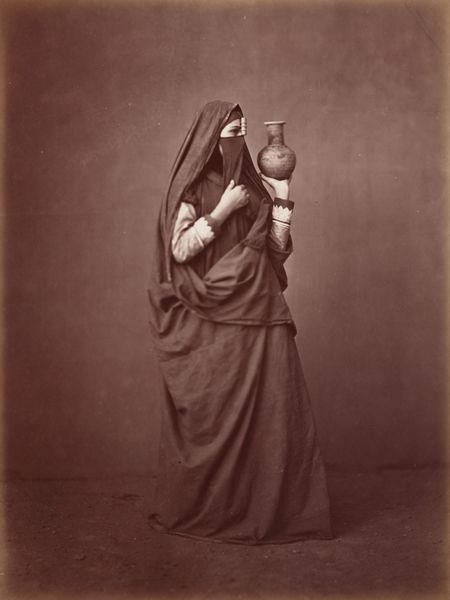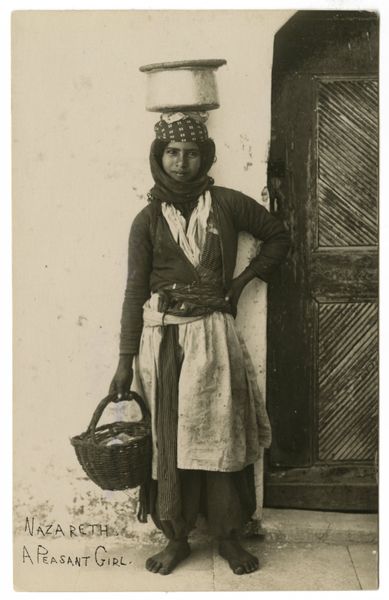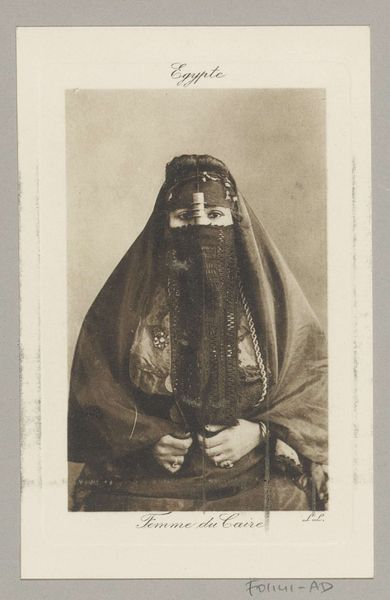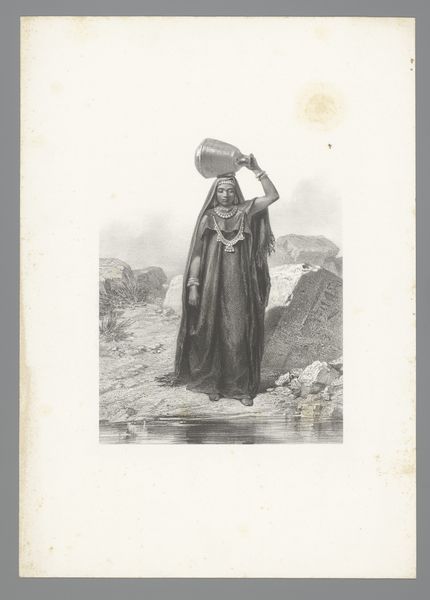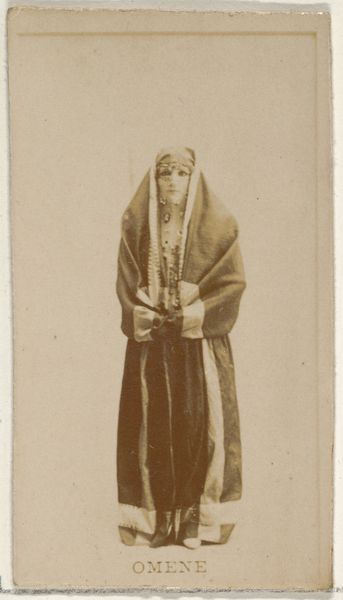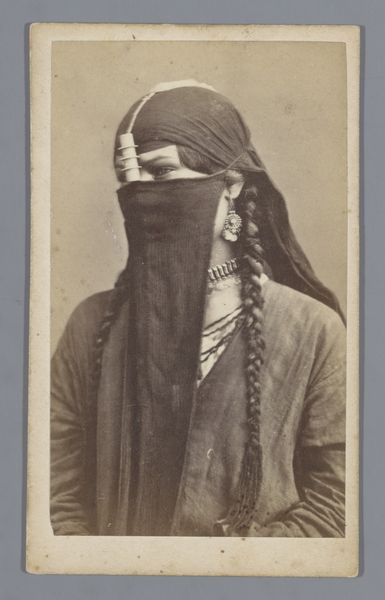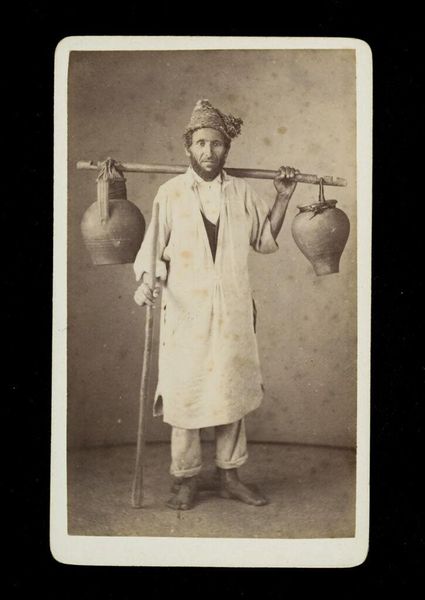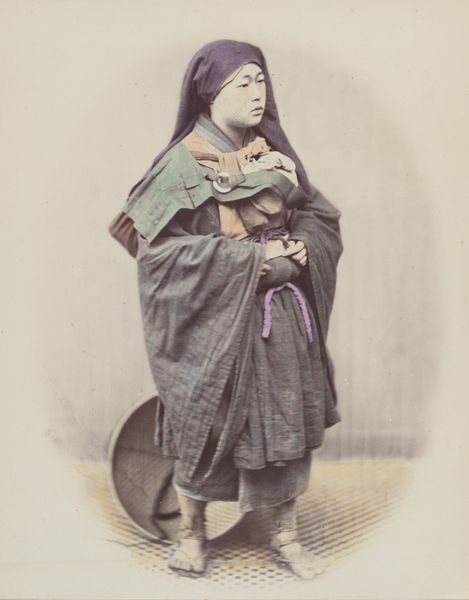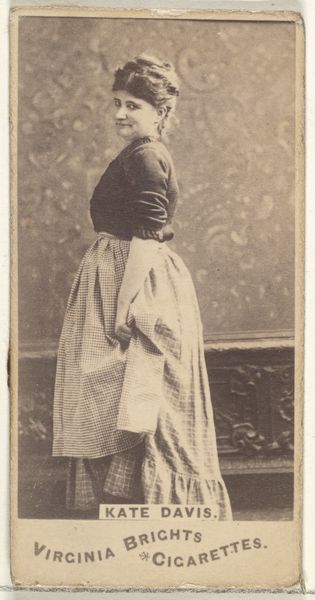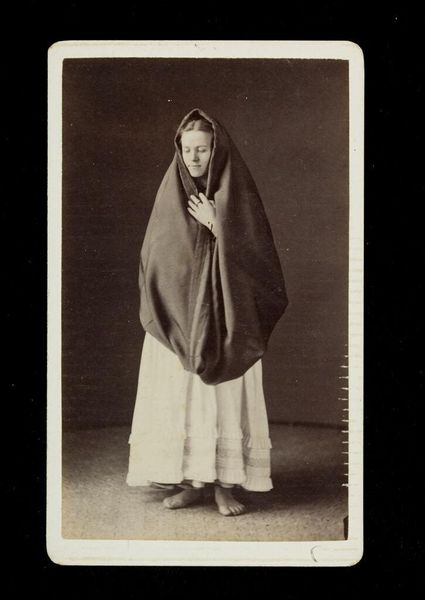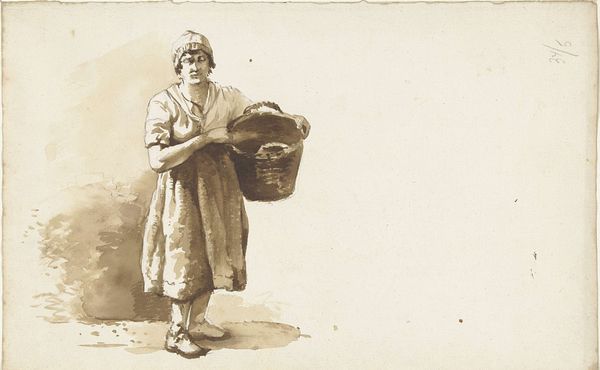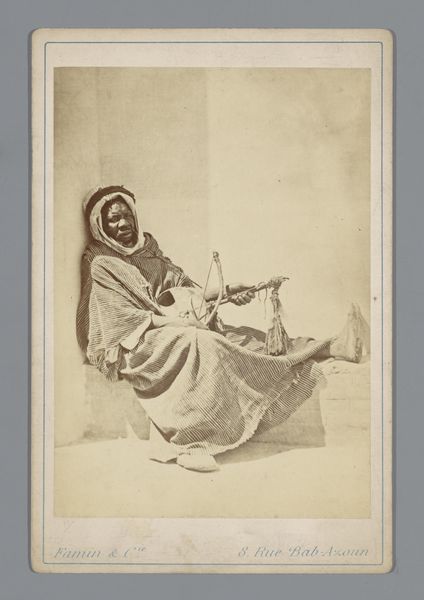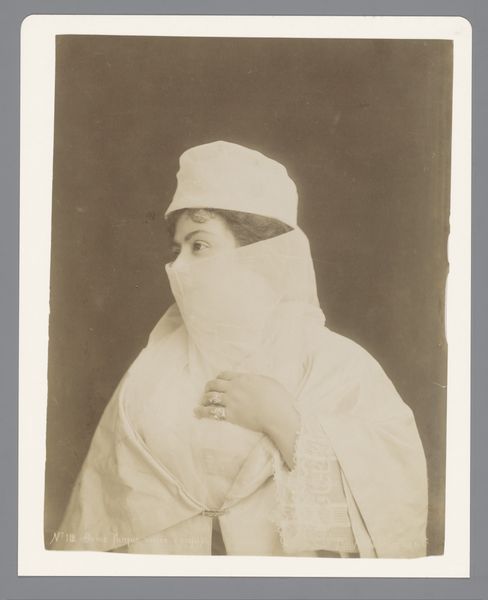![Porteuse d'eau au Caire [Water Carrier in Cairo] by Félix Bonfils](/_next/image?url=https%3A%2F%2Fd2w8kbdekdi1gv.cloudfront.net%2FeyJidWNrZXQiOiAiYXJ0ZXJhLWltYWdlcy1idWNrZXQiLCAia2V5IjogImFydHdvcmtzLzA0ZWNlMzQyLTg2NmQtNGUwYi1iMjMzLTk5ZGM4MDNjZDg3Ny8wNGVjZTM0Mi04NjZkLTRlMGItYjIzMy05OWRjODAzY2Q4NzdfZnVsbC5qcGciLCAiZWRpdHMiOiB7InJlc2l6ZSI6IHsid2lkdGgiOiAxOTIwLCAiaGVpZ2h0IjogMTkyMCwgImZpdCI6ICJpbnNpZGUifX19&w=3840&q=75)
photography, albumen-print
#
portrait
#
photography
#
ancient-mediterranean
#
orientalism
#
19th century
#
islamic-art
#
genre-painting
#
albumen-print
Dimensions: overall: 26.8 x 20.2 cm (10 9/16 x 7 15/16 in.)
Copyright: National Gallery of Art: CC0 1.0
Curator: Immediately striking is the textural interplay here. The rough, almost clumsy amphora in direct juxtaposition with the diaphanous veil... It's compelling, isn't it? Editor: Oh, utterly! She looks so vulnerable and powerful all at once. As if she's balancing worlds along with that jar. I bet it’s heavier than it looks. Curator: Precisely! This is Fèlix Bonfils' "Water Carrier in Cairo," circa 1870, an albumen print. Note how Bonfils stages the sitter, emphasizing her position within the frame. The backdrop is kept intentionally neutral, drawing attention to the stark contrast of form and fabric. Editor: And that muted palette! Browns melting into grays. Feels like peering into a sepia dream, a world both familiar and incredibly distant. It really hits home that this moment, this person, has vanished. She feels preserved but ephemeral. Do you think she knows she's becoming a monument even then? Curator: The 'monument' aspect is significant. Bonfils and his contemporaries were documenting, in their eyes, the 'exotic'. Their work certainly reinforced certain power dynamics of the era. Yet within this context, there is undeniable compositional brilliance. The lighting, despite its limitations, accentuates the planes of her face behind the veil. It flattens the overall picture-space in favor of foreground impact. Editor: But do you think she picked that veil, arranged it just so? Maybe it wasn't some stiff, colonial imposition, you know? Perhaps the photo booth – for lack of a better phrase - gave her permission to be both concealed and witnessed... A charged intimate moment! I bet her gaze burns right through you if you catch her in the right light. Curator: An astute observation, one rooted in historical context. We cannot fully dismiss Orientalist perspectives inherent at the time; yet through compositional analysis we gain fresh vantage to broader themes. There are complex interactions that exceed a simple case of exploitation, which is a fascinating component of this print’s impact. Editor: I can't help but be haunted by those eyes; they really pop amid that shadowy composition. But really this image is not as simple as Orientalist exploitation... there's life teeming within all its historical paradoxes. Curator: Indeed. Bonfils leaves us much to contemplate regarding the nuances between observation and preservation.
Comments
No comments
Be the first to comment and join the conversation on the ultimate creative platform.
